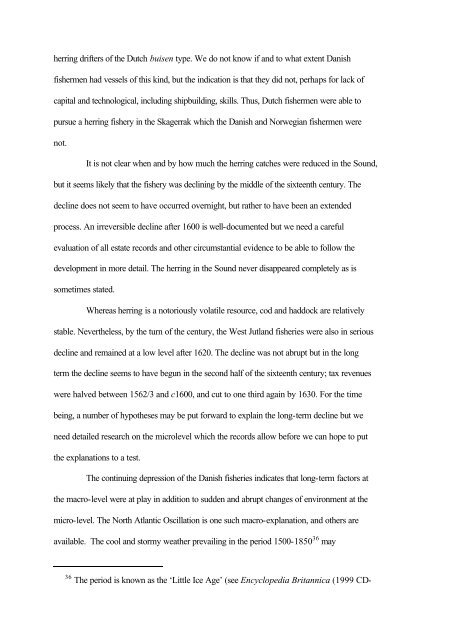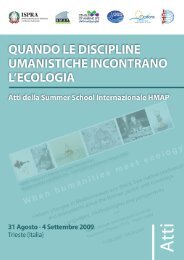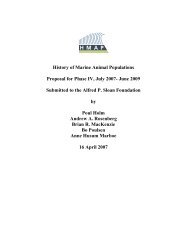The Danish fisheries c.1450-1800. Medieval and early modern ...
The Danish fisheries c.1450-1800. Medieval and early modern ...
The Danish fisheries c.1450-1800. Medieval and early modern ...
Create successful ePaper yourself
Turn your PDF publications into a flip-book with our unique Google optimized e-Paper software.
herring drifters of the Dutch buisen type. We do not know if <strong>and</strong> to what extent <strong>Danish</strong><br />
fishermen had vessels of this kind, but the indication is that they did not, perhaps for lack of<br />
capital <strong>and</strong> technological, including shipbuilding, skills. Thus, Dutch fishermen were able to<br />
pursue a herring fishery in the Skagerrak which the <strong>Danish</strong> <strong>and</strong> Norwegian fishermen were<br />
not.<br />
It is not clear when <strong>and</strong> by how much the herring catches were reduced in the Sound,<br />
but it seems likely that the fishery was declining by the middle of the sixteenth century. <strong>The</strong><br />
decline does not seem to have occurred overnight, but rather to have been an extended<br />
process. An irreversible decline after 1600 is well-documented but we need a careful<br />
evaluation of all estate records <strong>and</strong> other circumstantial evidence to be able to follow the<br />
development in more detail. <strong>The</strong> herring in the Sound never disappeared completely as is<br />
sometimes stated.<br />
Whereas herring is a notoriously volatile resource, cod <strong>and</strong> haddock are relatively<br />
stable. Nevertheless, by the turn of the century, the West Jutl<strong>and</strong> <strong>fisheries</strong> were also in serious<br />
decline <strong>and</strong> remained at a low level after 1620. <strong>The</strong> decline was not abrupt but in the long<br />
term the decline seems to have begun in the second half of the sixteenth century; tax revenues<br />
were halved between 1562/3 <strong>and</strong> c1600, <strong>and</strong> cut to one third again by 1630. For the time<br />
being, a number of hypotheses may be put forward to explain the long-term decline but we<br />
need detailed research on the microlevel which the records allow before we can hope to put<br />
the explanations to a test.<br />
<strong>The</strong> continuing depression of the <strong>Danish</strong> <strong>fisheries</strong> indicates that long-term factors at<br />
the macro-level were at play in addition to sudden <strong>and</strong> abrupt changes of environment at the<br />
micro-level. <strong>The</strong> North Atlantic Oscillation is one such macro-explanation, <strong>and</strong> others are<br />
available. <strong>The</strong> cool <strong>and</strong> stormy weather prevailing in the period 1500-1850 36 may<br />
36 <strong>The</strong> period is known as the ‘Little Ice Age’ (see Encyclopedia Britannica (1999 CD-






